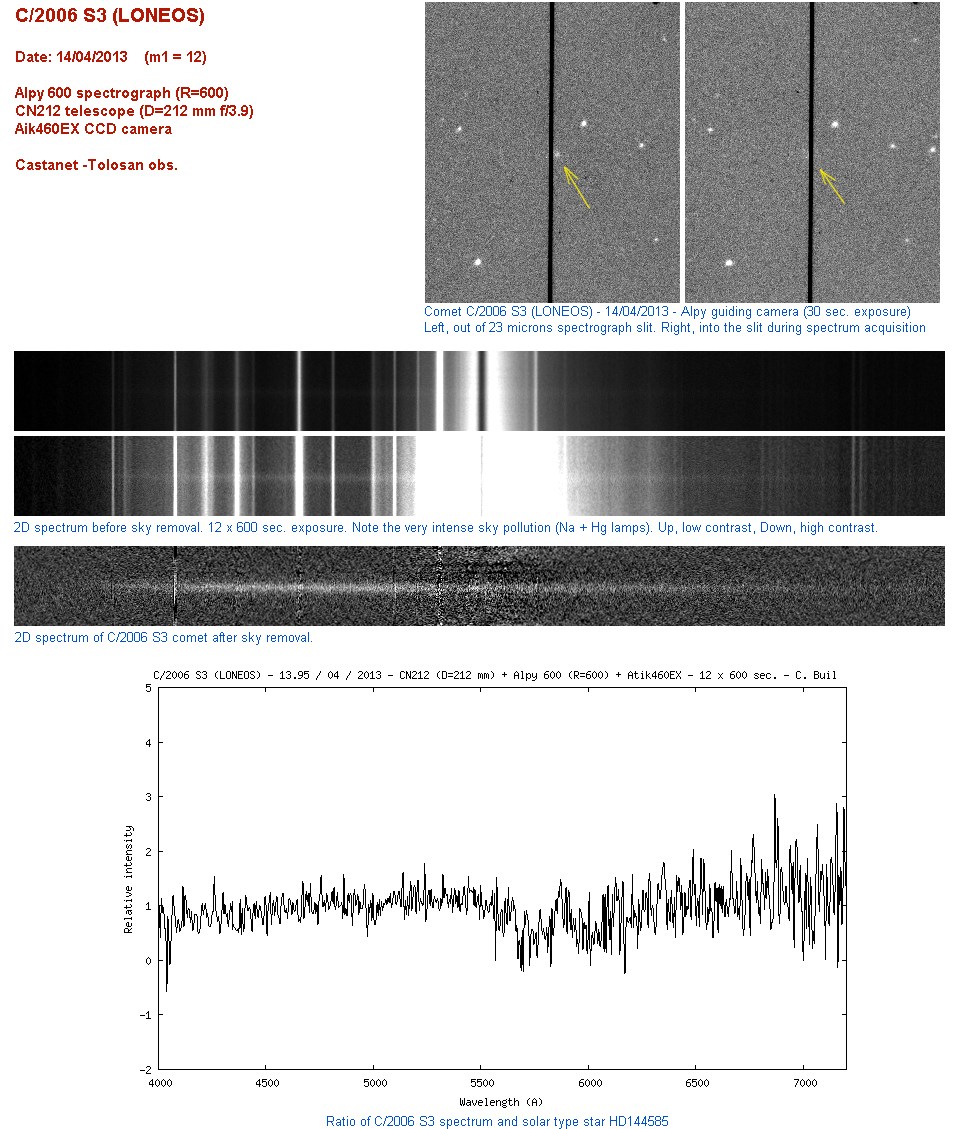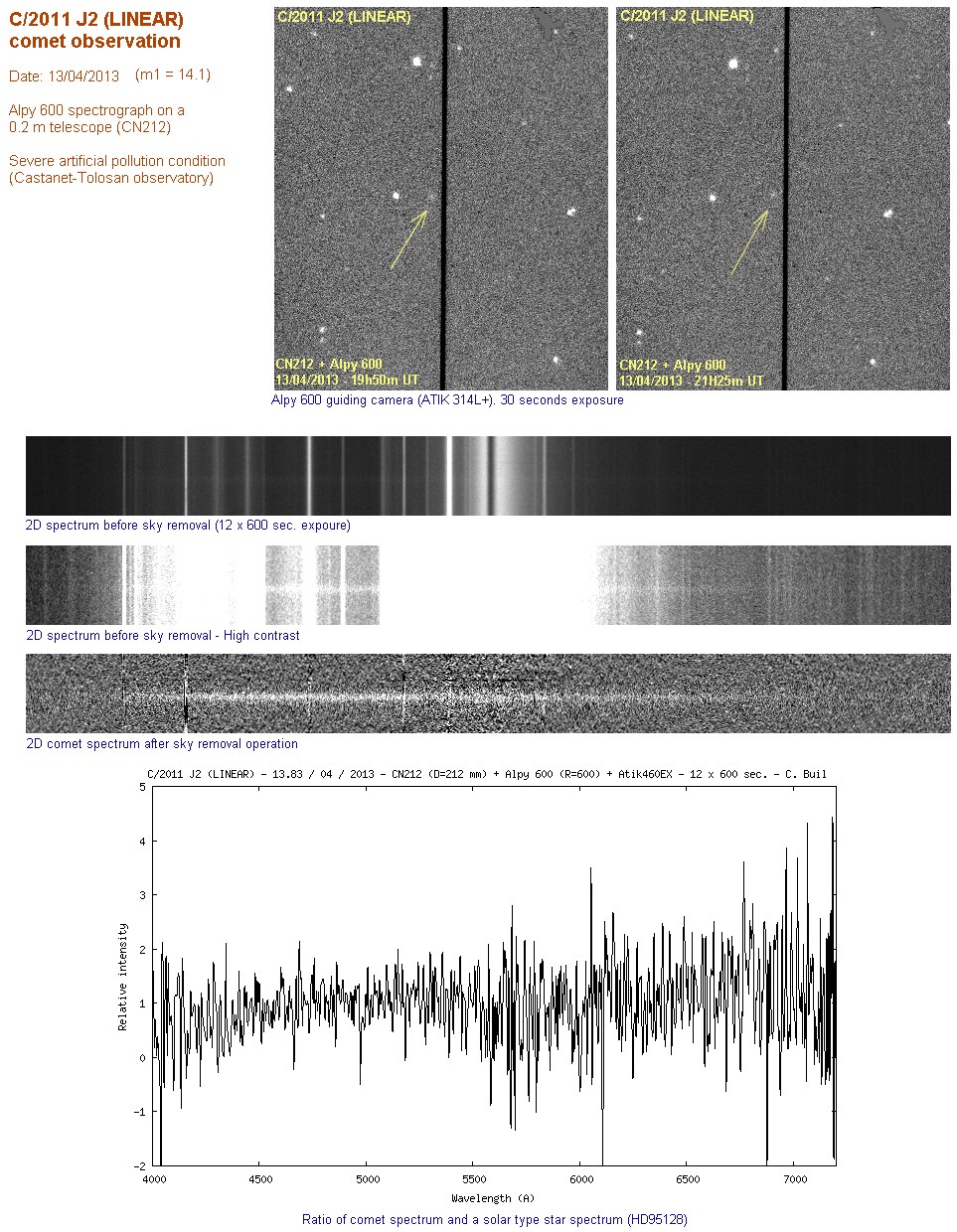The spectra are taken in urban conditions (the surfacic magnitude of comets is only a very small fraction
of sky background). The telescope aperture is also modest (200 mm) but luminous (f/3.9).
The result show only very discrete comet signature (SNR = 4 - 6). But with a 400 mm f/4 telescope in darkness,
the Alpy spectrograph (also LISA probably) can be a comet killer in the range V=13-16, or more faintest - an ideal
configuration - really ! ]
La comète pan-STARRS étant définitivement impossible depuis mon obervatoire (urbain) je me
suis rabattu sur d'autres objets de ce type, mais bien plus faibles...
C''est une observation difficile pour moi car je travaille dans un milieu très pollué (de plus en plus !) par des lampadaires et
que pour réussir, j'ai utilisé le spectrographe Alpy 600 (toujours en phase de test) sur un télescope
extrémement lumineux, ouvert à f/3,9 (un CN212 Takahashi). Du coup, le fond de ciel monte
vite dans l'image malgré l'usage d'une fente étroite.
Pour donner une idée, la brillance surfacique de la comète C/2011 J2 (LINEAR) - voir ci-après -
represente moins de 5% de la brillance du fond de ciel. L'objet est complétement perdu dans
le fond parasite.
En plus, le télescope utilisé est de petit diamètre, 200 millimètres, donc cet un handicap
supplémentaire. Aussi, ll faut être indulgent devant le résultat présenté
A présent j'extrapole sur ce résultat. Une configuration du genre Alpy 600 sur
un tube Newton du type Dobson de 400 mm à f/4 et placé sous un ciel, doit être une
configuration proche de la perfection (couplage surement idéal spectro/télescope).
Celui ou celle qui aura la possibilité de mettre une telle configuration va faire un malheur.
Les comètes dans le domaine de magnitude 13 à 15 sont alors des objets faciles, je le garanti.
C'est un autre pan de la spectrographie amateur qui s'ouvre.
En attendant voila ce que j'obtient depuis Castanet-Tolosan (voyez les images de guidage
pour apprécier la faiblesse des objets par rapport au fond de ciel), avec en plus
un fort vent d'Autan.
D'abord C/2006 J3 (LONEOS) vers la magnitude 13 :

Puis C/2011 J2 (LINEAR) vers la magnitude 15 :

Une fois de plus, il n'est pas fait justice ici au spectrographe Alpy 600 du fait de
la situation de l'observatoire et du télescope utilisé (diamètre). Ce type d'objet
est aussi à la portée d'un LISA je pense.
Christian